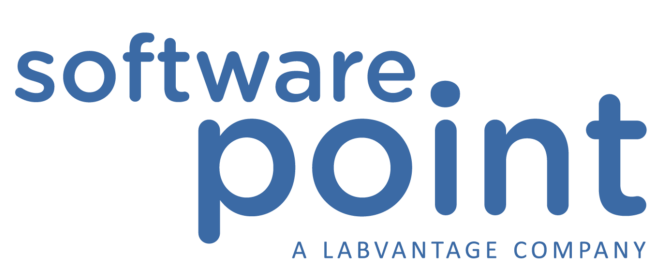21. Nov 2018 | Tags: LabVantage LIMS, LIMS
 When choosing your first LIMS, it can be hard to know where to start. A complex process involving a tangle of specialized jargon (RESTful, HL7, and RS-232), it’s easy to quickly feel a little lost.
When choosing your first LIMS, it can be hard to know where to start. A complex process involving a tangle of specialized jargon (RESTful, HL7, and RS-232), it’s easy to quickly feel a little lost.
Industry standards like ASTM E1578, the Standard Guide for Laboratory Informatics, can help you understand many aspects of the informatics landscape and clarify many of the industry’s terms and concepts. These standards can also point you to other standards and guides which can also prove useful during your LIMS selection.
However, since these guides are typically written with all stakeholders in mind, they fast become very technical. This may ultimately limit their usefulness for someone new to the world of LIMS.
To help bridge this gap, we’ve written this post with you in mind.
Start with What Your LIMS System Will Do
So what is the LIMS intended to do, in the most general sense? This may seem like a simplistic question, but there are many types of LIMS. Some systems do a lot of one thing, and others perform many intertwined functions.
Understanding the nature of your lab will go a long way towards narrowing the scope of what you need. For example, if your lab only stores a large volume of samples to be turned over to a third-party for testing, choosing a complex, enterprise system wouldn’t make sense for you.
In quality circles, there’s a concept called “fitness for use,” (rephrased by the FDA as “fitness for intended use”). This is one of the most important questions asked and verified during validation exercises. Based on the quality principles defined by Joseph M. Juran, everything starts with the essential question: “What does this system intend to do?” The selection is based on how well it meets that goal.
In our experience, a LIMS system has a lifetime of at least six years. Therefore, understanding the nature of your business – the “intended use” – and your organization’s 5- to 10-year goals is critical during selection of your first LIMS.
Next, Consider Competing Priorities
Now that you understand the purpose of your LIMS system, you should think about how competing priorities may impact your approach. Although much has been written about the triple constraint in project management, Angelo Baratta’s updated version is the most useful in this context (reference: Baratta, A. (2007). The value triple constraint: measuring the effectiveness of the project management paradigm. Paper presented at PMI® Global Congress 2007—North America, Atlanta, GA. Newtown Square, PA: Project Management Institute.) The new version of the constraint identifies capability, scope, and value as being constrained. Let’s break these down in the context of purchasing a LIMS system.
Capability
Now that you’ve identified your intended use, start honing in on the features your system will need to achieve your goal. Shown below are a few of the LIMS features you should consider:
- Core system – the technology platform on which the system operates, whether it is modern and scalable, cloud-hosted or on-premises.
- Lot and batch management – whether samples need to be analyzed as belonging to a larger physical collection.
- Scheduling events – scheduling samples for collection, testing for shelf-life, routine calibration of instruments, etc.
- Instrument interfacing – the ability to connect simple and complex instruments, and the nature of those connections for speed, robustness, and data integrity
- Capacity planning – the robustness with which the LIMS can help with human and material planning for availability, duration and capacity.
- Inventory management – the tracking and management of lab assets and materials.
- Investigations – tracking non-conformances and implementing corrective actions.
- Statistical trending and control charting.
- Analytics – using advanced analytical methods to examine data.
- Data integrity – the degree to which data is accurate, reliable and protected.
- System integration – connecting the LIMS to other lab or business systems.
- Support and training – the availability of the vendor’s—or other organization’s—help to implement and maintain your system as well as train your staff to use it.
Scope
Scope involves understanding the degree to which each of the identified capabilities must extend. For example, when thinking about batches, does your lab limit the scope of the batch to a single manufacturing run, or are you obligated to track multiple runs to a single batch? Do you need to track a parent-child relationship between lots? Understanding the scope of the batch/lot capability is necessary when defining the new system’s requirements.
Another example: When tracking inventory, do you only need to track the resource availability (for example, water), or does the lab need to know remaining quantities? The location of reagents? The disposal of unused resources? Each can limit or expand the scope of required functionality.
Finally, look at your lab’s regulatory environment. How strict are those regulations? Would reduced data integrity make your product less valuable on the market, or could it result in a regulatory agency fining your organization, or even shutting it down for non-compliance?
Pharmaceutical labs must comply with very strict regulations for tracking changes to data, controlling operational functions, and submitting rigorous reports to the government. However, labs that test things like cosmetics have somewhat less strict regulations, and those that provide quality testing for common household items like light bulbs may have even fewer federal regulations. In some cases, consumer satisfaction may serve as the sole metric for quality compliance.
Value
Ultimately a LIMS system must provide value to your organization. The question is the measure by which that value is judged. As mentioned above, value may only be judged by consumer satisfaction. However, it may be something as rigorous as the accuracy of a diagnosis for a condition or disease – something that may even jeopardize the health or safety of the subject or consumer.
We know that the quality of testing has value, but sometimes the speed of testing is also critical. When testing is conducted on a tissue sample, for instance, the turnaround time of that ultimate diagnosis may be just as important as its accuracy so that life-saving treatment can begin as soon as possible.
Your lab may also place high importance on throughput – the volume of testing. For contract labs, testing many samples in parallel will likely have commercial value to the organization.
 Finally, Remember that Constraints May Compete with Each Other
Finally, Remember that Constraints May Compete with Each Other
Here’s an important point to keep in mind: all of the constraints listed above may compete with one another. Nowhere is this more evident than the financial aspect.
Every lab likely wishes to meet the highest quality standards, have the largest scope of potential features, and provide the highest level of accuracy, speed and throughput. But unfortunately, most labs simply do not have the financial resources and time to make that a reality.
Start by identifying your lab’s non-negotiable priorities, such as human safety and legal compliance. Next, identify your second-tier priorities (e.g., volume of testing or system interfacing). By understanding a new LIMS system within the context of these triple constraints—capability, scope, and value—you can prioritize the features and attributes of the LIMS system that will make your first LIMS exactly the right fit for your lab.

